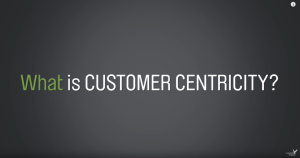When it comes to customer centricity, skill set and mindset go hand in hand. By fostering one without the other, you will probably see incremental improvements. However, if you want to implement a culture of customer centricity at your organization, building skills and shifting mindsets must be done in tandem. Let’s take a look at the two approaches and how you can tie them together.
Customer Centricity Skills
Successfully serving customers requires certain technical skills that will vary depending on your industry, but there are some universal skills that everybody should learn if you truly want to put the customer first:
- See the business through the lens of the customer experience – This might seem like a simple task, but it actually does take practice for it to come naturally. Individuals in the organization make choices all the time. You want them to make those choices by first asking, “How might this impact our customers?”
- Identify areas of personal responsibility – Everybody is busy, and it’s easy to ignore tasks when it’s not clear whose responsibility they are. Understanding the impacts of taking responsibility (or not) is a skill that can be honed. The more people in the company who possess this skill, the more proactive the entire team will be.
- Take personal action when appropriate – After identifying areas of personal responsibility, it’s time to take action. This is also a skill because it requires understanding the decision-making paths, knowing which barriers stand in the way, and how to overcome them.
All of these skills can be taught and improved over time. However, without building a foundation of a customer centricity mindset, people will be less likely to employ those skills in the workplace.
Customer Centricity Mindset
Creating a customer centricity mindset is a matter of shifting perspectives and ingraining them in the company culture. Some of the factors that contribute to this are:
- Understanding the big picture – Many individuals don’t realize just how much potential they have to impact the customer experience and the organization as a whole. Even people who do not typically interact with customers can influence their experience. Bringing this to light can help shift the perspective from an internal one to considering the customer’s experience in everything you do.
- Feeling empowered to make a difference – The value of understanding the big picture cannot be underestimated, because it can elicit possibilities that leadership might never have considered. For example, in a customer centric culture, a website developer (who never interacts with customers) might take extra care to make an online purchase flow as smooth and fast as possible in an effort to make the customer experience better.
- Feeling invested in the outcomes – When individuals realize that they can indeed have an impact, they are more inclined to feel invested in the outcomes. That same website developer has a choice when working on the purchase flow. He or she can implement an out-of-the-box solution, or he or she can consider the customer’s perspective and create a tailored experience that is designed to delight them. Because he or she is invested in the outcomes, he or she will choose the solution that best serves the customer.
Anybody can adopt this mindset, but without the necessary skills to execute, an initiative to promote customer centricity will fall flat. Individuals need both the internal motivation (mindset) and the ability to execute their ideas (skills). Building customer centricity skills also helps individuals adopt the mindset through regular practice and successes that make them want to continue on that path.










